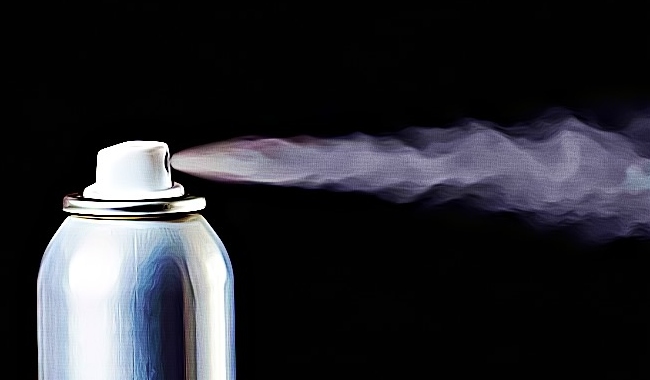Huffing is the act of inhaling chemicals or other substances to get high. People can do it through various methods, including using a rag soaked in the substance, spraying it directly into the mouth, or using a straw or other device to inhale it from a container.
It is a dangerous way to get high because it involves inhaling toxic chemicals. When people huff, they are essentially poisoning themselves. Inhaling chemicals can damage the lungs and other organs and lead to death. But what else should people know about it?
1. Inhalant Abuse
Inhalant abuse is dangerous because of the toxic chemicals involved, and it can cause serious health problems, including brain damage, heart problems, and even death. While some people may use inhalants for recreational purposes, they can be incredibly dangerous and even deadly.
Meanwhile, long-term use of inhalants can lead to various mental health issues, including depression, anxiety, and psychosis. Therefore, it is essential to recognize the signs of inhalant abuse and get help for those struggling.
2. Paint is the Most Popular Inhalant
Paint is the most commonly abused inhalant, with roughly half of all inhalant-related deaths involving paint fumes. It contains various chemicals, including solvents and acetone, which can be highly toxic when inhaled.
Inhalants like paint can cause dizziness, nausea, and even unconsciousness. Additionally, inhaling paint can damage the lungs, heart, and brain, leading to long-term health problems. Therefore, it is essential to be vigilant and aware of the dangers of paint inhalation.
3. Toluene is a Toxic Chemical
Toluene is a toxic chemical commonly found in paints and other products. It is a colorless liquid with a sweet smell and is highly flammable. Toluene can be inhaled, and the vapors can cause dizziness, headaches, confusion, and nausea.
Prolonged exposure to the chemical can damage the central nervous system, liver, and kidneys. Inhaling too much toluene can even be fatal. Therefore, it is vital to take precautions when using products that contain toluene. It is best to use them in a well-ventilated area.
4. Causes a Sense of Euphoria
Huffing can cause a sense of euphoria, a familiar sensation for people inhaling toxic chemicals. It provides a cheap, accessible high for those unable to access other drugs. The effects of huffing are caused by inhaling the vapors from various household products.
The effects of huffing can be felt almost immediately and last several hours. The user may experience a sense of euphoria, dizziness, lightheadedness, confusion, agitation, and hallucinations. These effects are short-lived and can be extremely dangerous.
5. Underaged Teens Do Huffing
Huffing is a dangerous activity that is often associated with young people. Underaged teens are the most likely to engage in huffing due to their lack of knowledge about the risks and their need to experience a high.
Young people often turn to huffing because they look for a quick and easy way to get high without being caught. Unfortunately, this can lead to serious injury, addiction, and even death. Educating teens and young adults about the risks of huffing is also essential to avoid problems.
Ways People Huff Addicting Inhalants
Huffing is a hazardous activity that people should never take lightly. However, despite the risks, huffing is still a prevalent problem for most people, especially those under age. But how do people huff? Here are some ways people huff addicting inhalants.
a. Huffing
Huffing is the most common way of using inhalants. It involves inhaling the vapors of the substance directly from the container or a rag soaked in the substance. Usually pressed on the mouth, the fumes instantly get absorbed by the body upon contact.
b. Bagging
Bagging is a method of huffing in which the person puts a bag over their head and inhales the fumes from the container, rag, or balloon filled with the inhalant. It is a more dangerous method because it increases the concentration of the fumes, leading to a more intense high.
c. Sniffing
Sniffing uses inhalants where the person directly inhales the fumes from the container or rag. It is not as dangerous as huffing or bagging since the inhalant is not concentrated in one place, but the risk of overdose is still present.
d. Spraying
Spraying uses inhalants where the person sprays the fumes from a container directly into their nose and mouth. It is a more dangerous method than sniffing since the inhalant is more concentrated, leading to a more intense high.

Effects of Huffing on the Body
Huffing can have several adverse effects on the body. It can cause several physical and mental issues, including dizziness, nausea, headaches, confusion, and loss of consciousness. It can also lead to long-term problems such as damage to the heart and lungs, liver and kidney damage, and permanent damage to the brain. In some cases, it can even be fatal. Huffing can also lead to:
a. Asphyxiation
Asphyxiation is the lack of oxygen in the body, which can be caused by suffocation, choking, or drowning. It can also be caused by inhalation of dangerous substances such as smoke, chemicals, or fumes. When the body does not get enough oxygen, it can cause serious health problems and even death.
b. Sudden Sniffing Death Syndrome (SSDS)
Sudden Sniffing Death Syndrome (SSDS) is a rare but severe consequence of huffing. It occurs when a person inhales too much of a volatile substance, such as aerosol sprays or solvents, and their heart suddenly stops. SSDS can happen even if the person has only been huffing for a few minutes.
Effects of Chronic Huffing on the Body
Chronic huffing can cause a variety of physical and mental health problems. It can damage the lungs and increase the risk of respiratory illnesses such as pneumonia and bronchitis. It can also cause damage to the brain and central nervous system.
Meanwhile, chronic huffing can also lead to memory loss, confusion, and impaired coordination. It can damage the heart and increase the risk of heart attack or stroke. Huffing can lead to addiction and withdrawal symptoms, such as anxiety, depression, and insomnia.
1. Coordination Problems
Chronic huffing can cause coordination problems, making it difficult to perform simple tasks like walking or writing. Inhaled chemicals can damage the brain and the central nervous system, leading to coordination problems.
2. Nerve Damage
Inhaling chemicals can damage the nerves, leading to numbness, tingling, and pain in the limbs and other body parts. The nerve damage can also cause slurred speech, difficulty swallowing, and loss of sensation.
3. Hearing Loss
Chronic huffing can cause hearing loss due to the chemicals damaging the auditory nerve. Hearing loss can range from mild to complete deafness. As a result, patients would have to wear hearing aids to ensure they still get to hear the environment around them.
Conclusion
Huffing, also known as inhalant abuse, is a dangerous and often deadly practice involving inhaling chemical vapors to get high. It is a form of substance abuse that is often overlooked but can have serious consequences.
It is dangerous for young people, as their bodies are still developing and are thus more vulnerable to the toxic effects of the chemicals. In addition, huffing can lead to long-term health problems such as learning, memory, hearing, and vision problems.
If you or someone you know is struggling with huffing, it is vital to seek help. Treatment for huffing typically involves cognitive-behavioral therapy and other forms of counseling. Finding healthy ways to cope with stress and avoid triggers that may lead to huffing is also essential.

